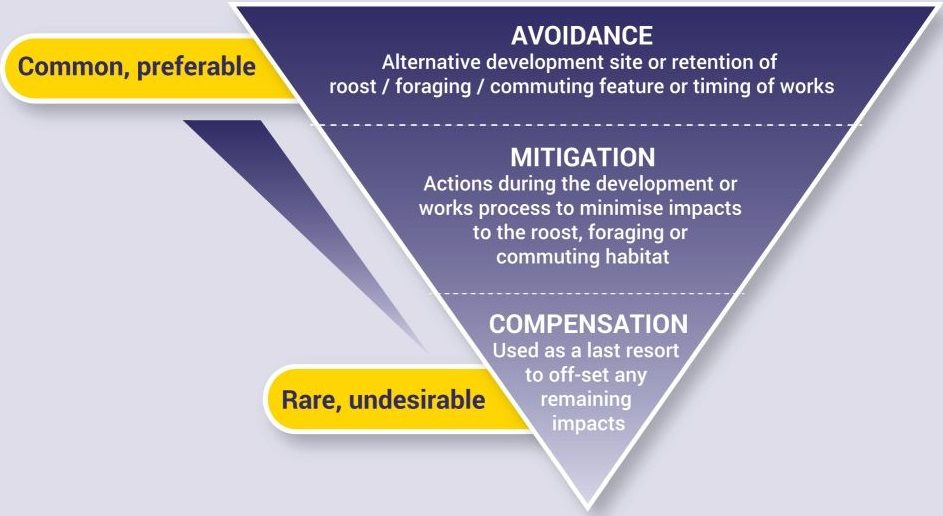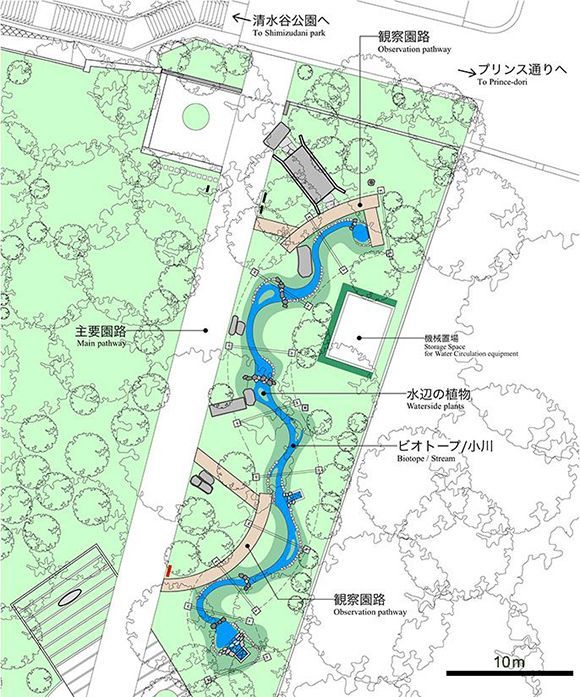(Upload on June 26 2022) [ 日本語 | English ]
Mount Usu / Sarobetsu post-mined peatland
From left: Crater basin in 1986 and 2006. Cottongrass / Daylily
HOME > Lecture catalog / Research summary > Glossary > Restoration ecology
What is "restoration ecology"?Ecological restoration is the process of assisting the recovery of ecosystems or landscapes that have been damaged by both natural and anthropogenic activities. On plant communities, we often conduct the transplantation and seeding of native species and the removal of non-native species.(Jordan et al. 1990)Restoration (復元)
Rehabilitation (復旧)
Reclamation (再生)
Ecoup (エコアップ)Ecological standard up (= increasing the standard of ecological quality) → ecoup (Japanese-English)
Techniques to restore the environments for habitats → increasing biodiversity by case-by-case apporach |
(WA SEPA 2003) Mitigation (ミティゲーション)Designed to limit the effects of development by enabling wild plants and animals to survive during the building phase and to live in harmony with the new development
 Wetland bank A site where wetlands and/orother aquatic resources are restored, created, enhanced, or inexceptional circumstances, preserved expressly for the purpose of providing compensatory mitigation in advance of authorized impacts to similar resources |
Revegetation Area
The ground surface of Toyako Preschool was covered with cinders and volcanic ash produced by the 2000 eruptions of Usu Volcano, The former vegetaion was damagedby the eruptions. |
Experiments on post-mined peatlandThe ground surface where the revegetation was slow was covered with degradabile nets, to promote seedling establishment, on Sarobetsu post-mined peatland. On July 13 2013, two years had passed since the nets were established. Rhynchospora alba firstly colonized. |
| Ecological theory | Potential actions |
| Island biogeography theory | |
|---|---|
| Dispersal limitation | Sow seeds, plant propagules and add perches to facilitate bird dispersal |
| Establishment limitation | Provide high habitat heterogeneity, import substrate, amend soil and eliminate undesired species or competitors Persistence limitation Restore large habitat blocks, minimize fragmentation and provide corridors between habitat blocks |
| Niche theory | |
| Safe sites | Increase micro-topographic heterogeneity to improve germination |
| Fundamental and realized niches | Plant species in suitable microsites, conduct pilot plantings to identify suitable habitats and plant more broadly in Phase 2d |
| Ecotypic variation | Plant appropriate genotypes and provide genetic variation for future selection |
| Self-design theory | Establish physical and chemical conditions that will favor desired species, anticipate changes, and assume that species (planted or volunteer) will 'find' suitable habitats |
| Assembly rules (functional group) | Prepare site so that it will support late-succession species, plant them early and combine compatible species (e.g. members of different functional groups) |
| Hydrarch succession | Plant submergents, floating aquatics and emergents at appropriate water depths |
| Population theory | |
| Minimum viable populations | Introduce larger numbers of propagules |
| Metapopulation dynamics | Provide multiple habitat patches and dispersal corridors |
| Competition theory - competitive exclusion | Tend plantings to speed growth (fertilize, mulch, weed, control herbivory and treat disease) |
| Priority effects | Introduce desired species early and introduce larger and/or older individuals to shorten the time to dominance |
| Facilitation | Provide nurse plants or surrogate structures to trap seeds and/or reduce stress on seedlings; plant individuals in clusters; and inoculate soil with mycorrhizae |
| Invasion theory (exotic species, 帰化植物) | Remove invaders by hand or machine; use herbicides or pesticides; smother with black plastic or mulch; introduce fast-growing cover crops |
| Trophic theory | |
| Herbivory theory (intermediate grazing hypothesis) | Employ moderate grazing and/or mowing to reduce dominance by a few species and to promote species richness |
| Trophic cascade | Introduce carnivores to regulate herbivores and promote plant growth |
| Keystone species | Introduce top carnivores that feed opportunistically and increase animal diversity (e.g. starfish on rocky shores); and introduce animals that increase habitat heterogeneity (e.g. alligators and beavers) |
| Disturbance theory | Provide flood pulses at appropriate intervals for streams and rivers; burn wetlands to control shrubs and trees; and fence out animals that disturb sites in undesirable ways or introduce animals that enhance diversity by opening patches in dense canopies |
a See Box 4 for relevant theories and concepts of development.
b Data compiled from ecology textbooks and Refs 9,15.
c Many theories and concepts could be considered components of succession theory and are relevant to the wetland restoration. The list is not exhaustive, but the selections illustrate how complex restoration can be and how difficult it is to predict how a specific wetland ecosystem will develop.
d Phase 2: species are planted in suitable microsites, pilot plantings are conducted to identify suitable habitats and then the results are used to plant more broadly in subsequent phases.
A prescribed productive use(s) of the land after mining such as grazing, forestry, and/or wildlife habitats.
ComplianceConducting extraction and reclamation activities in accordance with the requirements of state and federal law.SeedingTo sprinkle seeds, to plant seeds in, or to sow. |
Artificial seedingTechnique: ___ (Application)
|
|
In the case of restoration ecology The process of again becoming green and covered with vegetation
|
|
≈ environment impact assessment (EIA)The law of Japan (日本)Basic environmental law (環境基本法)Environmental assessment book (環境アセスメント図書)↓ Foresight book (配慮書)↓ Operation book (方法書) ↓ Preparation book (準備書) ↓ Evaluation book (評価書) |
Zero option (ゼロオプション): the option of not proceeding with the proposed activity, plan or programme at all nor with any of its alternatives
This recommendation has special significance if the proposed activity concerns a technology not previously applied in the region and which is considered to be of high risk and/or to have an unknown potential environmental impact. OECM (民間取組等と連携した自然環境保全)2010 COP10: other effective area-based conservation measure (OECM)living in harmony with nature (vision in 2050) EADAS (日本環境アセスメントデータベース)= Environmental Assessment DAtabase System) |
A process to degrade the target pollutant or contaminated media, such as water and soil, by altering environmental conditions to stimulate the activities of microorganisms
Phytoremediation (ファイトレメディエーション)the treatment of pollutants or waste (as in contaminated soil or water) by plants that remove, degrade or stabilize the undesirable substances, e.g., toxic metalsPhyto-extraction (植物体抽出)the use of plants to remove contaminants from the environment and concentrate them in aboveground tissues |
Rhizo-filtration (植物根濾過)the use of plant roots to absorb, concentrate and precipitate toxic metals from contaminated (ground)waterPhyto-stabilization (植物安定処理)the reduction of the mobility of heavy metals in soilPhyto-volatilization (植物揮散)the uptake and transpiration of contaminants, primarily organic compounds, by plants |
|
One problem is the translation ..., (greening ≈ 緑化) Greening (s.l.) includes habitat restoration, planting trees, food gardening and naturalization (rewilding)
School greening (学校緑化): increasing passion for outdoor activity as well as creativity and spontaneity for kindergarten-class children |
Slope greening (法面緑化)to stabilize a slope and to protect slopes against soil erosion by developing vegetation cover |
|
= ecological network a representation of the biotic interactions in an ecosystem, in which species (nodes) are connected by pairwise interactions (links) |
 core area: ●
core area: ●buffer zone: ● corridor: linear corridor ■■■ stepping stone corridor ●●● landscape corridor === sustainable use area: □ Fig. Schematic illustration of ecological or ecosystem network formed by cores, buffers and corridors. |
|
≈ habitat An area of uniform environmental conditions providing a living place for a specific assemblage of plants and animals
The definition differs somehow among countries or regions, e.g., Activities (examples)
|
Conservation and Resotration of Biological Diversity by Creating Biotopes Conservation and Restoration of Biological Diversity in "Hikari-no-monri" have been promoted in good harmony with historical environment in the region represented by stone wall of Benkeibori moat. Since some firefly species such as Luciola lateralis and Luciola crucitae have been identified in and around Imperial Palace and midtown of Tokyo area as well, this biotope will be expected to be a habitat for those species and preserve ecosystem which has been original to the region.
Conservation and Restoration of Biological Diversity in "Hikari-no-monri" have been promoted in good harmony with historical environment in the region represented by stone wall of Benkeibori moat. Since some firefly species such as Luciola lateralis and Luciola crucitae have been identified in and around Imperial Palace and midtown of Tokyo area as well, this biotope will be expected to be a habitat for those species and preserve ecosystem which has been original to the region.
(November 24 2017) |